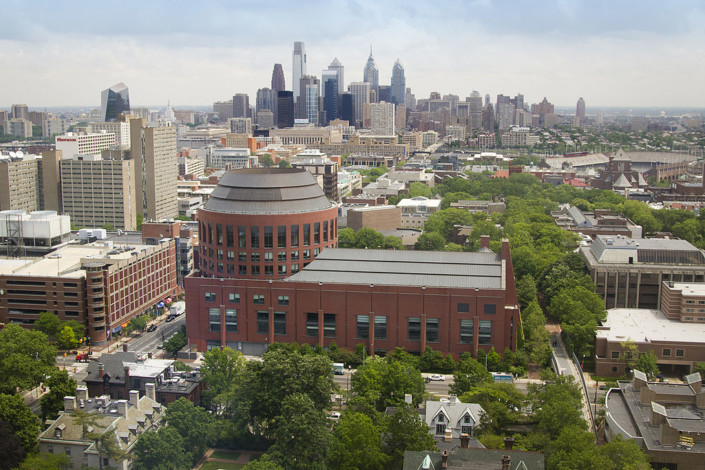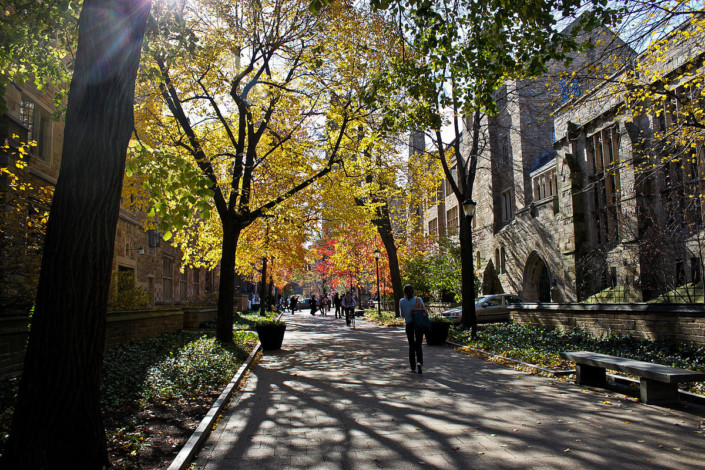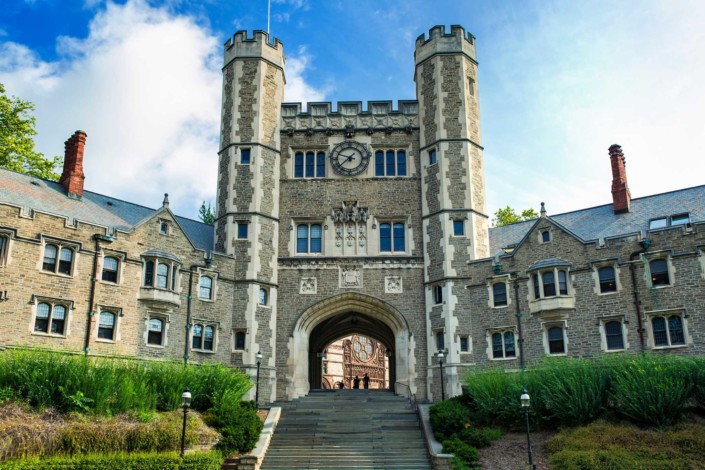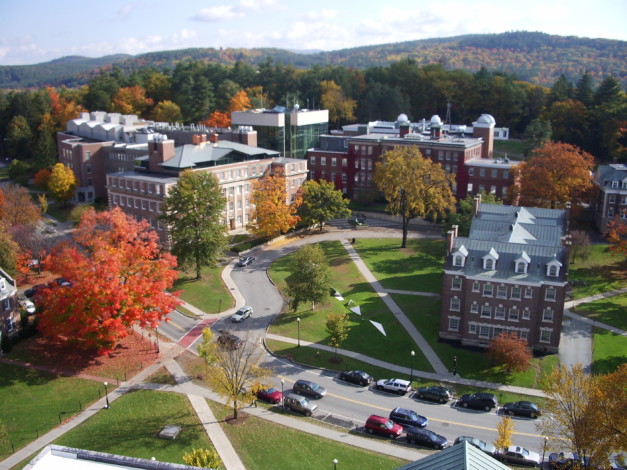Meet the Ivy League Class of 2021
Over the past decade, acceptance rates have continued to drop at elite colleges across the country. Nowhere has this decline been more pronounced than at the Ivy League schools. In fact, just ten years ago, only four of the Ivies had acceptance rates below 10%. Now, all but one do. And as admissions become more and more selective, admissions teams are faced with harder and harder decisions.
Dean of Undergraduate Admissions at Yale University, Jeremiah Quinlan, noted that the university routinely reviews many more applications from qualified students than they are able to admit. “Virtually all of the students we denied will be successful students at other great colleges and universities,” he noted after this year’s application season.
The term Ivy League originally referred to the athletic conference composed of sports teams from eight private colleges and universities in the northeastern United States. Now, the term is more commonly used to refer to these same eight schools in the context of their collective academic excellence and extreme selectivity in admissions. Indeed, admissions to the Ivy League schools are notoriously competitive.
Ivy Day is a big day for high school students waiting to hear back about their Ivy League college applications. It is the day that Ivy League schools release their admissions decisions online, simultaneously, at 5 PM ET. This year it fell on March 30.
In many ways, this year was no different than years past; as usual, hundreds of thousands of Ivy League hopefuls waited anxiously for their fate to be revealed. If this year was different in any way, it was only so because it marked the most competitive Ivy League admissions season ever. Record numbers of students applied to nearly every Ivy League institution, and acceptance rates reached all-time lows at the majority of schools.
By all measures, the Ivy League Class of 2021 is poised for success. Please join us in congratulating the many successful students who received good news from Ivy League schools last week.
Here, we introduce you to the Ivy League Class of 2021.
Cornell University
Like many other Ivies, Cornell reported record applications for the class of 2021, with over 47,000 applications streaming in. As a result, the acceptance rate at Cornell reached an all-time low of 12.5%. The admitted students represent all 50 states and 69 foreign countries.
Specifically, 30.2% of the admitted class identify as an underrepresented minority, and 52.5% identify as students of color. 9% of admits are international students, and 700 admitted students are first-generation college students.
Jason Locke, Associate Vice Provost for Enrollment, noted proudly, “We have admitted an extraordinarily gifted and accomplished class of scholars.”
University of Pennsylvania
UPenn also broke records this application season. More than 40,000 applications were received and the acceptance rate sank to 9.15%.
This year, UPenn saw a 10% increase in international applications. The admitted students hail from all 50 states and 94 foreign countries.
54% of the admitted students are female, slightly more than the 52% who account for the current UPenn undergrad student body. 13% are first-generation college students and 46% identify as students of color.
Dean of Admissions Eric Furda challenged admitted students to take control of their futures. “The responsibility is on the students. Here’s the opportunity, here are the resources our campus has to offer, and the unknown here is how will these students, who then ultimately enroll at Penn, intersect with each other up and down Locust Walk and in the College Houses?”
Brown University
Brown also received their highest number of applications in history, with nearly 34,000 students vying for spots in the freshman class. The acceptance rate reached a record low of 8.3%, and the admitted students at Brown represent 50 states and 77 countries.
12% are international students, 14% are first-generation students, and 47% identify as students of color.
This year, nearly 2,500 students applied to Brown’s prestigious Program in Liberal Medical Education (PLME), where only 95 applicants were offered acceptance, for an acceptance rate of just 3.9%.
Dean of Admission Logan Powell observed that the class of 2021 is not only academically gifted, but also the largest and most diverse in the University’s history.
Yale University
This year, Yale accepted the largest freshman class in its history, a conscious move in support of its goal to expand from a student body of 5,400 to 6,200 over the next four years. Dean of Undergraduate Admissions Jeremiah Quinlan noted, “Even with a significantly larger cohort of admitted students, we have not sacrificed anything to admit an extremely qualified group of students with a remarkably broad range of backgrounds, identities and experiences.”
Indeed, this year, Yale received a record 32,900 applications and accepted only 6.9%.
The admitted students represent all 50 states and 68 foreign countries.
Although the exact numbers have not yet been released, Yale boasted that the proportion of applicants and admitted students who identify as members of a minority have continued to steadily increase this year.
Harvard University
Harvard received nearly 40,000 applications this year and accepted only 5.2% of them. The students represent all 50 states, and 11.4% are international students.
Of the accepted students, 21.8% identify as Asian American, 12.6% as Latino, 10.5% as African American, and 2.3% as Native Americans and Native Hawaiians. 15.1% of the admitted students will be first-generation college students.
Dean of Admissions William Fitzsimmons was quoted in the student paper as saying that “the reality is if you don’t recruit a very diverse student body, your university will be less relevant to the country as time goes by.”
Harvard also released information specific to intended majors, stressing that this year’s admits represent a 12.3% increase in students interested in studying computer science. This builds on a 22.1% increase in interest over the previous year, though social science interests still account for 26.5% of admits.
Princeton University
Princeton also had a record-breaking admissions season, with its acceptance rate dropping to 6.1% after receiving over 31,000 applications. A Princeton student paper, Planet Princeton, noted that in the past 14 years, the applicant pool has more than doubled.
The admitted students represent 49 states and 76 countries, and 12.1% of those admitted are international students. 50.5% of admits are female and 53.4% identify as people of color. 18.9% will be first-generation college students.
Princeton also released some information specific to academic standing. Of all applicants, over 12,000 had perfect 4.0 GPAs and nearly 14,000 scored a 1400 or higher on the SAT.
Princeton’s Dean of Admission, Janet Lavin Rapelye, reported, “We continue to see growth in the applicant pool, making this year’s evaluation process especially challenging. . . Many candidates were in the admissible range, and while we could not include all of these fine students, we are confident they will find success wherever they go.”
Dartmouth College
Dartmouth boasts that its Class of 2021 is the most academically accomplished and globally diverse that the college has ever accepted. While they received slightly fewer applications than in years past, the school still admitted only 10.4% of applicants, the lowest acceptance rate since 2013.
Admitted students hail from all 50 states and 63 foreign countries. 51% identify as students of color and 15% will be first-generation college students. 255 international students were accepted, a 38% increase over the class of 2020.
Of the accepted students, 96% are expected to graduate in the top 10% of their class, and 547 students are currently ranked either the valedictorian or salutatorian of their class.
“Accepting, and hopefully enrolling, more students from around the world is sure to complement the College’s global outlook and curriculum,” said Dean of Admissions, Lee Coffin.
Columbia University
Like its Ivy companions, Columbia University also set records this application season. Early applicants totaled over 4,000 this year, representing a 16% increase and setting a new school record.
In total, over 37,000 hopefuls applied to Columbia this season, the highest number of applicants ever, and the acceptance rate dipped to just 5.8%, compared to last year’s 6.04%.
Columbia has yet to release specific statistics regarding the demographics of its accepted freshman class but one thing is for certain — they are bound to be one of the highest achieving and diverse classes to date.
If you’re among the students whose hard work has been rewarded this college application season, congratulations! Record numbers of applicants at many schools made this year the toughest yet.
For more about the Ivy League, check out these great CollegeVine posts:
Curious about your chances of acceptance to they Ivy League? Our free chancing engine takes into account your GPA, test scores, extracurriculars, and other data to predict your odds of acceptance at over 500 colleges across the U.S. We’ll also let you know how you stack up against other applicants and how you can improve your profile. Sign up for your free CollegeVine account today to get started!










